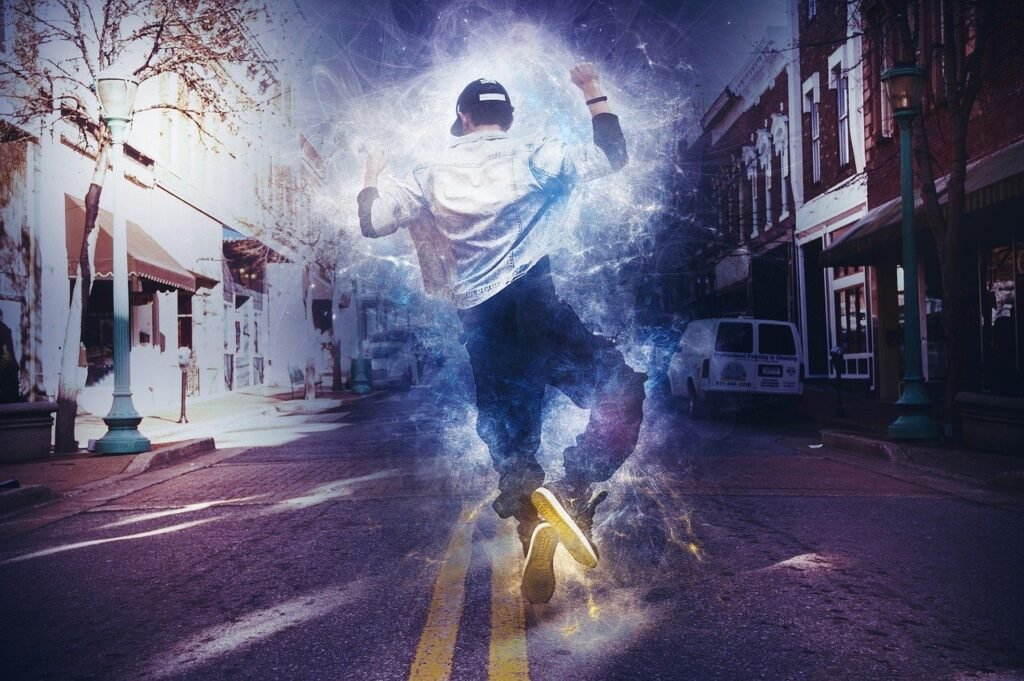You’re about to embark on a journey that explores the fascinating influence of hip hop music trends on popular culture. From the vibrant beats to the thought-provoking lyrics, it’s undeniable that hip hop has made a significant impact on the way we dress, speak, and even think. Get ready to dive into the world of hip hop and discover how this genre continues to reshape and redefine our modern society. So grab a pair of headphones and prepare to be immersed in the rhythmic melodies and powerful words that have shaped generations.

This image is property of pixabay.com.
The Cultural Significance of Hip Hop
Origins of Hip Hop
Hip hop originated in the South Bronx neighborhood of New York City in the 1970s, primarily within African American and Latinx communities. It was born as a form of expression for marginalized youth, providing a voice for those who felt unheard. Hip hop emerged as a creative outlet and a means of escaping the challenges and hardships of everyday life. It drew inspiration from various musical genres, including funk, soul, and disco, and incorporated elements of poetry and storytelling.
The Four Elements of Hip Hop
Hip hop culture is built upon four essential elements – MCing (rapping), DJing, breakdancing, and graffiti art. MCing involves rhythmic verses and rhymes delivered over a beat, often addressing social and political issues. DJing refers to the skill of manipulating and blending records to create unique mixes. Breakdancing is a high-energy dance form that combines athleticism, creativity, and self-expression. Graffiti art, rooted in urban street culture, serves as a visual representation of the hip hop movement, showcasing intricate designs and vibrant colors.
Hip Hop as a Cultural Movement
Beyond its musical and artistic aspects, hip hop has evolved into a powerful cultural movement. It has provided a platform for marginalized communities to share their stories, express their realities, and challenge societal norms. Hip hop has become a force for social change, advocating for justice, equality, and empowerment. It has given rise to cultural icons who have used their influence to address important issues and inspire positive change. Hip hop’s ability to connect people from diverse backgrounds and bridge gaps makes it a significant cultural phenomenon.
The Evolution of Hip Hop Music
The Birth of Gangsta Rap
Gangsta rap emerged in the late 1980s and early 1990s, primarily on the West Coast of the United States. It depicted the harsh realities of inner-city life, often focusing on themes of violence, drugs, and gang culture. Artists such as N.W.A, Tupac Shakur, and The Notorious B.I.G. brought gangsta rap into the mainstream, using their music to shed light on systemic issues and expose the struggles faced by their communities. Despite its controversial nature, gangsta rap played a crucial role in giving a voice to the unheard and bringing attention to social injustices.
The Rise of Mumble Rap
In recent years, a new subgenre known as mumble rap has gained popularity within the hip hop landscape. Characterized by unintelligible lyrics and a heavy reliance on melodies and autotune, mumble rap has divided audiences and sparked debates within the hip hop community. Critics argue that it lacks substance and lyrical depth, while proponents appreciate its catchy hooks and infectious beats. Mumble rap represents a departure from the traditional lyrical style of hip hop, reflecting the evolving tastes and preferences of a newer generation.
The Influence of Trap Music
Originating in the Southern United States, trap music has had a profound impact on hip hop as well as the mainstream music industry. With its heavy basslines, aggressive lyrics, and trap-style beats, trap music has become synonymous with the depiction of urban street life and the pursuit of success. Artists such as Gucci Mane, T.I., and Future have popularized this subgenre, bringing it to the forefront of the music scene. Trap music’s influence is evident in various music genres, from pop to electronic, making it a significant contributor to the evolution of hip hop music.
Hip Hop Fashion and Style
The Impact of Baggy Clothing
One of the defining features of hip hop fashion has been the widespread adoption of baggy clothing. Influenced by prison attire and the need for freedom of movement, baggy jeans, oversized t-shirts, and loose-fitting clothing became a staple of hip hop style. This unique fashion trend symbolized a sense of rebelliousness and individuality, while also providing a canvas for self-expression. Baggy clothing has since become a global fashion phenomenon, transcending cultural boundaries and influencing mainstream fashion trends.
Sneakers and Streetwear Culture
Sneakers have played a significant role in hip hop culture, representing a form of status, identity, and street credibility. From the iconic Air Jordan line to collaborations between hip hop artists and popular sneaker brands, sneakers have become synonymous with urban fashion. Streetwear culture, closely tied to hip hop, revolves around the popularity of graphic t-shirts, hoodies, baseball caps, and accessories. Its blend of comfort, style, and attitude has made streetwear a dominant force in contemporary fashion.
The Role of Jewelry and Bling
Jewelry and bling have long been associated with the hip hop aesthetic. Artists flaunt gold chains, diamond-encrusted watches, and flashy rings as symbols of success and wealth. Bling culture, characterized by its extravagance and opulence, emerged as a form of self-expression and a display of status. As hip hop gained mainstream prominence, the influence of jewelry and bling extended beyond the music industry, permeating popular culture and inspiring fashion trends around the world.
The Influence on Language and Slang
The Birth of New Words and Expressions
Hip hop has introduced numerous words and expressions into everyday vocabulary. From “bling” to “fly” to “dope,” these terms originated from the lyrics and vernacular of hip hop artists. These newfound words and expressions added vibrancy and freshness to the English language, showcasing the ingenuity and creativity of hip hop culture. They have become part of mainstream communication, further solidifying hip hop’s influence on language.
The Influence of African American Vernacular English
African American Vernacular English (AAVE), commonly referred to as Ebonics, has had a profound impact on hip hop’s language and style. The rhythmic cadence, unique grammar structures, and distinctive pronunciation found in AAVE have been integrated into hip hop lyrics, contributing to the genre’s distinct sound and delivery. Hip hop has celebrated and preserved the linguistic heritage of African American communities, elevating AAVE to a global platform.
The Global Spread of Hip Hop Slang
Hip hop slang has transcended borders and languages, spreading its influence globally. From London to Tokyo to Johannesburg, hip hop slang has permeated various cultures and languages, creating a sense of connection and shared identity. This global adoption of hip hop slang demonstrates its ability to cross cultural barriers and unite people through a common linguistic medium. It serves as a testament to the power of hip hop as a worldwide cultural phenomenon.

This image is property of pixabay.com.
The Role of Hip Hop in Breaking Social Barriers
Addressing Social Issues in Lyrics
Hip hop has been a powerful tool for addressing social issues and raising awareness about injustice. Through their lyrics, hip hop artists tackle topics such as racism, poverty, police brutality, and systemic oppression. Hip hop serves as a platform to shed light on these pressing societal issues, sparking conversations and prompting individuals to question the status quo. It provides a voice for the marginalized, empowering them to speak out and inspire change.
Empowerment Through Music
Hip hop has empowered individuals and communities by providing a medium for self-expression and representation. It has given voice to those who have been overlooked or marginalized, allowing them to share their stories and experiences with the world. Hip hop’s emphasis on authenticity and personal narrative has inspired countless individuals to embrace their own uniqueness, fostering a sense of empowerment and self-confidence.
Breaking Stereotypes and Challenging Norms
Hip hop has challenged societal stereotypes and norms, breaking down barriers and redefining what it means to be successful. It has provided a platform for artists from diverse backgrounds to express their creativity and achieve mainstream success. Hip hop’s ability to transcend racial, ethnic, and socioeconomic boundaries has demolished preconceived notions, highlighting the power of unity and the celebration of diversity.
Hip Hop’s Impact on Dance and Choreography
Breakdancing and B-Boy Culture
Breakdancing, also known as b-boying, originated in the early days of hip hop and has evolved into a globally recognized dance form. It is characterized by dynamic movements, acrobatics, and intricate footwork. Breakdancing played a pivotal role in the rise of hip hop culture, providing an outlet for self-expression and creativity. B-boying has fostered a sense of community and camaraderie among dancers, creating a global network that pushes the boundaries of dance and choreography.
The Popularity of Hip Hop Dance Styles
Hip hop dance styles, such as popping, locking, and krumping, have become immensely popular around the world. These energetic and expressive dance forms have transcended the hip hop music genre, finding their way into mainstream dance competitions, music videos, and even traditional dance education. Hip hop dance continues to evolve and innovate, incorporating elements from various cultures and styles, making it a significant player in the global dance landscape.
The Influence on Mainstream Dance
Hip hop’s influence on mainstream dance cannot be overstated. Its fusion of street dance styles, musicality, and improvisation has revolutionized the way dance is perceived and interpreted. From commercial choreography to contemporary dance routines, hip hop continues to shape the dance industry by inspiring new movements and pushing the boundaries of creativity. Hip hop’s impact extends beyond the confines of its own culture, infusing mainstream dance forms with its energy and vitality.

This image is property of pixabay.com.
The Intersection of Hip Hop and Film
Hip Hop Soundtracks and Film Scores
Hip hop has had a significant impact on the world of film through its use in soundtracks and film scores. From classic movies like “Boyz n the Hood” and “Menace II Society” to modern blockbusters like “Black Panther” and “Straight Outta Compton,” hip hop has played a central role in shaping the cinematic experience. Hip hop soundtracks often capture the essence of a film, elevating the storytelling and enhancing the audience’s emotional connection.
The Rise of Hip Hop-inspired Movies
The influence of hip hop can be seen in the rise of movies inspired by the genre and its culture. Films like “8 Mile,” “Hustle & Flow,” and “Dope” have gained critical acclaim for their authentic portrayals of the hip hop world. These movies explore the struggles, triumphs, and dreams of aspiring artists, shedding light on the human stories behind the music. Hip hop-inspired movies have not only entertained audiences but have also provided a platform for capturing the essence of hip hop culture and its impact on society.
Hip Hop Documentaries and Biopics
Documentaries and biopics have become valuable tools for showcasing the history and influence of hip hop. Films like “Style Wars,” “The Art of Rap,” and “Hip Hop Evolution” provide an in-depth look into the origins, evolution, and cultural impact of hip hop. Biopics such as “Straight Outta Compton” and “Notorious” bring to life the stories of influential artists, offering a glimpse into their personal journeys and the challenges they faced. These films serve as educational resources, preserving the legacy of hip hop and inspiring future generations.
The Connection between Hip Hop and Sports
Athletes and Rappers: The Crossover Culture
The connection between hip hop and sports is evident in the crossover culture that exists between athletes and rappers. Many athletes have demonstrated a passion for hip hop, frequently collaborating with artists on music projects and appearing in music videos. In turn, hip hop artists have embraced sports, often referencing athletes in their lyrics and incorporating sports themes into their music. The shared love for competition, determination, and success has formed a strong bond between the worlds of hip hop and sports.
Hip Hop’s Influence on Sports Fashion
Hip hop’s impact on sports extends beyond music collaborations and references. It has significantly influenced sports fashion, with athletes and fans adopting hip hop-inspired styles both on and off the field. From oversized jerseys to luxury streetwear, hip hop’s influence can be seen in the wardrobe choices of athletes and the fashion choices of sports enthusiasts. Hip hop’s fusion of comfort, style, and self-expression has become a dominant force in the realm of sports fashion.
The Role of Hip Hop in Sports Advertisements
Hip hop has played a prominent role in sports advertisements, serving as the soundtrack to iconic commercials and campaigns. The energy, passion, and intensity of hip hop music align well with the competitive spirit of sports, allowing brands to create compelling narratives that resonate with audiences. Athletes and hip hop artists often collaborate on advertising campaigns, bridging the gap between sports and music and creating powerful moments of inspiration and motivation.
The Impact on Visual Arts and Graffiti
Hip Hop Graffiti: From the Streets to Galleries
Graffiti art has been an integral part of hip hop culture since its inception, serving as a visual representation of the movement. From subway cars to city walls, graffiti artists have used their craft to express themselves and communicate messages of social and political significance. Over the years, hip hop graffiti has moved from the streets to art galleries, gaining recognition as a legitimate form of artistic expression. Today, renowned graffiti artists showcase their work in museums and exhibitions, blurring the lines between art, culture, and urban aesthetics.
The Connection between Rap and Visual Arts
The connection between rap music and visual arts is evident in album cover designs, music videos, and stage performances. Artists leverage visual elements to enhance the storytelling and thematic elements of their music. From elaborate stage setups to elaborate music videos, rap music embraces artistic expression on multiple fronts, blurring the boundaries between music and visual arts.
Hip Hop’s Influence on Graphic Design
Hip hop has had a significant influence on graphic design, shaping the aesthetics, typography, and visual identity of the genre. Album covers, promotional materials, and merchandise reflect the bold, vibrant, and innovative nature of hip hop. Graphic designers often draw inspiration from hip hop culture, incorporating graffiti elements, street art motifs, and urban imagery into their work. Hip hop’s influence on graphic design reaches beyond the music industry, impacting various creative fields and visual communication.
The Globalization of Hip Hop
Hip Hop’s Worldwide Reach
Hip hop has transcended borders and languages, developing a global following and reaching audiences around the world. Its universal appeal lies in its ability to connect people through music, rhythm, and emotion. Hip hop’s worldwide reach can be attributed to the internet, social media, and digital streaming platforms, which have facilitated the sharing of music and cultural content across continents. Artists from different countries and cultures have embraced hip hop, infusing their unique perspectives and experiences into the genre, creating a global tapestry of sounds and styles.
The Emergence of International Hip Hop Scenes
Hip hop scenes have emerged in various countries, giving rise to a vibrant and diverse international hip hop community. From France to Japan to South Africa, artists have adapted hip hop to their own cultural contexts, incorporating their local languages, rhythms, and musical traditions. International hip hop scenes have provided a platform for artists to express their own realities and challenge dominant narratives, creating a global network of voices united by the spirit of hip hop.
The Blending of Local and Global Hip Hop Cultures
As hip hop has spread globally, it has also influenced and been influenced by local cultures and music scenes. The blending of local and global hip hop cultures has given rise to unique subgenres and fusions, showcasing the adaptability and versatility of the genre. Artists worldwide have embraced hip hop as a means of cultural expression, blending their own musical traditions with hip hop’s rhythmic foundation, resulting in a rich tapestry of sounds and styles. This interplay between local and global hip hop cultures has contributed to the ongoing evolution and innovation within the genre.
In conclusion, hip hop’s cultural significance can be seen in its origins as a voice for the marginalized, its evolution within the music industry, its impact on fashion, language, and dance, its presence in film, sports, and visual arts, and its global reach and influence. Hip hop has empowered individuals, broken social barriers, and challenged norms, making it a transformative cultural movement that continues to shape popular culture and inspire generations to come.
